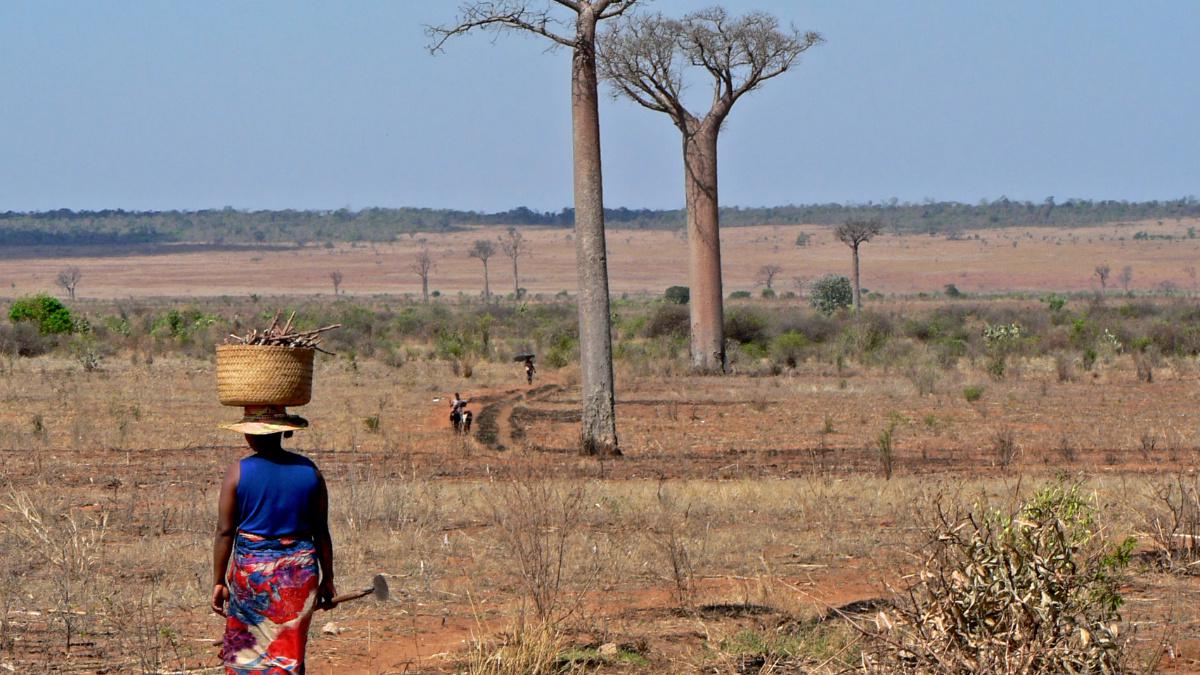
Climate Crisis Will Shift Tropical Rain Belt and Create Food Insecurity for Billions, Study Finds

Madagascar has been experiencing ongoing droughts and food insecurity since 2016. arturbo / Getty Images
Nearly 1.6 million people in the southern part of Madagascar have faced food insecurity since 2016, experiencing one drought after another, the United Nations World Food Program reported.
A study published Monday found billions more could face food insecurity as Earth’s tropical rain belt shifts in response to climate change, causing increased drought stress and intensified flooding.
“Our work shows that climate change will cause the position of Earth’s tropical rain belt to move in opposite directions in two longitudinal sectors that cover almost two thirds of the globe, a process that will have cascading effects on water availability and food production around the world,” lead author Antonios Mamalakis, a postdoctoral fellow in the Department of Atmospheric Science at Colorado State University, told UCI News.
Researchers at the University of California, Irvine and other institutions analyzed how the tropical rain belt would respond to a future where greenhouse gas emission continued to rise through 2100, UCI News reported. Their findings, published in Nature Climate Change, revealed the rain belt will shift northward over the Eastern Hemisphere, impacting countries in southeastern Africa.
In Madagascar, these impacts are already being felt.
“We only had one day of rain in December in the whole region. And the thunderstorms have been blasting… and destroying and burying the crops that were there,” Lola Castro, the United Nations World Food Program regional director for Southern Africa and Indian Ocean States, told UN News. “The result is famine-like conditions.”
Madagascar’s vulnerability to the climate crisis, exacerbated by the Covid-19 pandemic, has left people with little to eat, Castro said. “Cactus mixed with mud, roots, whatever they can find, leaves, seeds, whatever is available.”
The rain belt is projected to shift toward a warming atmosphere, co-author James Randerson, UCI’s Ralph J. & Carol M. Cicerone Chair in Earth System Science, explained. “In Asia, projected reductions in aerosol emissions, glacier melting in the Himalayas and loss of snow cover in northern areas brought on by climate change will cause the atmosphere to heat up faster than in other regions,” he told UCI News.
Since 2000, glaciers in the Himalayas are losing more than a vertical foot and half of ice every year, Columbia University’s Earth Insititute reported, double the amount from 1975 to 2000.
“We know that the rain belt shifts toward this heating, and that its northward movement in the Eastern Hemisphere is consistent with these expected impacts of climate change,” Randerson told UCI News.
In the Western Hemisphere, the rain belt is expected to move in the opposite direction by shifting southward, the study found. This will cause greater drought stress to Central America, a region which is experiencing more than five years of recurring drought, Reuters reported.
By combining an engineering approach to both climate science and data analytics, the team of researchers found previously unknown consequences associated with global warming. They also saw how much more there is to learn.
“The complexity of the Earth system is daunting, with dependencies and feedback loops across many processes and scales,” author Efi Foufoula-Georgiou, UCI Distinguished Professor of Civil and Environmental Engineering, told UCI News.
Determining how these changes will impact flooding, droughts, infrastructure and ecosystems can inform adaptation strategies and policies, Foufoula-Georgiou told UCI News. But time may be running out.
“What we are saying here is that the situation we’re facing in southern Madagascar is not normal,” Lola Castro told UN News, regarding the humanitarian crisis. “It’s very different to any normal year of crisis and that we really need to act immediately.”
- Half a Degree of Warming Makes a Big Difference to Global Food ...
- UN Warns of Impending Food Crisis - EcoWatch
- Global Hunger Is Increasing, New UN Report Finds - EcoWatch

 233k
233k  41k
41k  Subscribe
Subscribe 